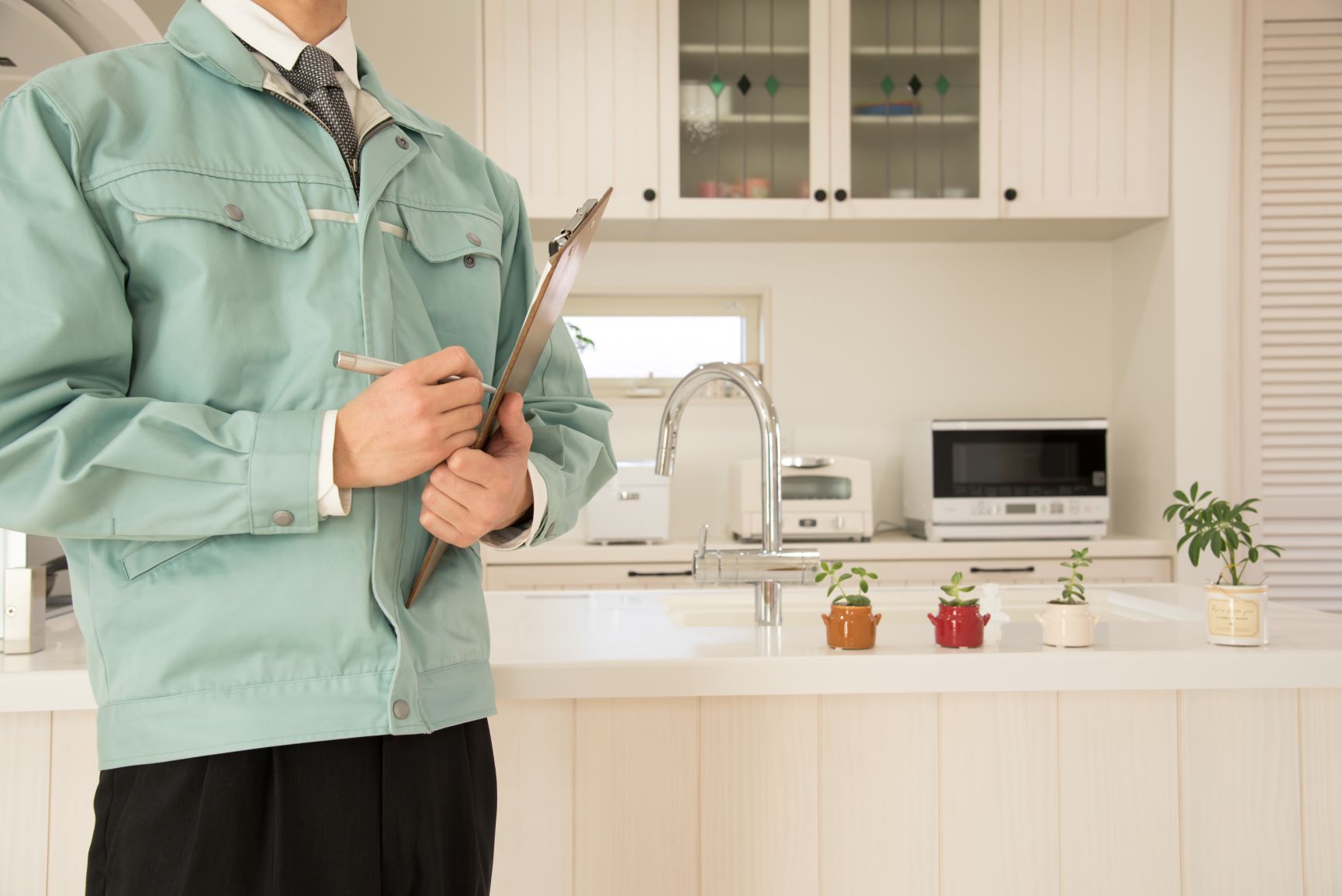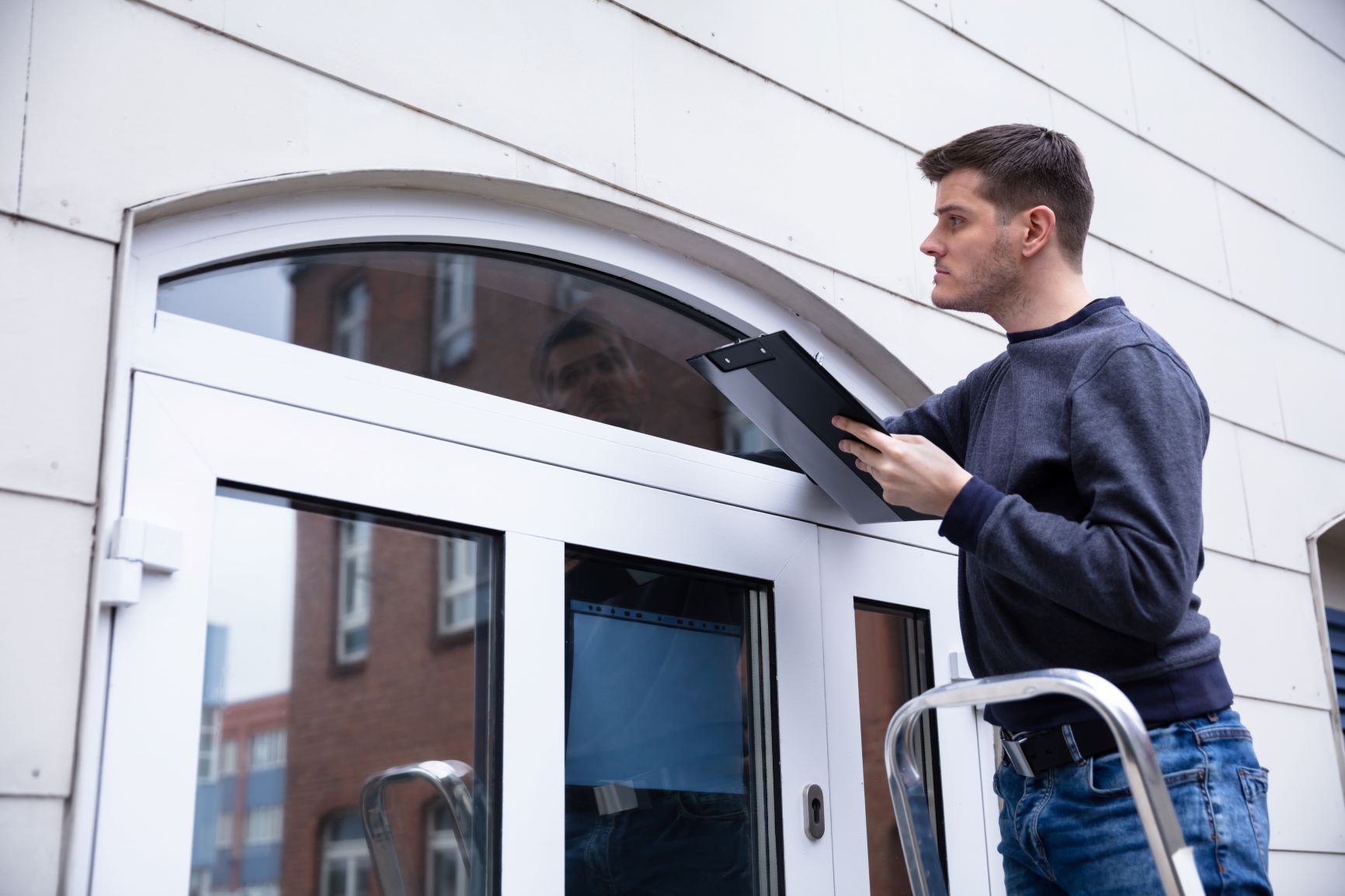Aside from being a significant milestone in every adult’s life, purchasing a home is also a substantial investment. You need to ensure that you’re getting an asset instead of a liability. That’s why you should inspect a potential residence for any damages that may reduce its value.
Property inspection has always been a crucial part of any homebuyer’s journey. You shouldn’t skip this step if you don’t want to end up with a derelict house instead of livable space.
You must remember, though, that you have limited time to conduct the inspection, especially with the current coronavirus crisis. With this in mind, you have the option to enlist the help of a professional. 86% of homebuyers reported that this service helped them identify at least one issue with a property. (1)
Of course, if you don’t want to add another expense to your home search, you can always conduct the procedure yourself. Just make sure that you have a property inspection checklist so that you can scrutinize every nook and cranny and don’t overlook any potential problems.
Here’s a guide on the factors that you should include:
1. Grounds
Start your inspection right before you enter the door to the home. Take a look at the outdoor area and check the drainage situation. There should be proper grading of the soil to ensure that water is sent away from the house instead of toward it. There shouldn’t be any evidence of stagnant water or leaks from the septic tank or leech field.
Scour the property to ensure that the yard, walkways, and overall landscaping are in pristine condition. There shouldn’t be branches or bushes touching any part of the home or hanging over the roof since this can lead to a termite infestation.
Check the wooden structures as well, such as fences, sheds, and detached garages, if there are no signs of damage or rotted wood. If there are, you may need to have a separate termite inspection conducted to ensure that you won’t have any pest problems in the future.

2. Exterior
For the exterior surface of the home, there should be sufficient clearance between the soil and wood siding materials. Any contact between the two materials can lead to a termite infestation. You don’t want termites in your potential home because they can cause structural damage, which can make a huge dent in your financial and mental health.
While you’re looking at wood siding, check for any cracks, curls, and decay. If the property has vinyl or aluminum siding, look out for dents and bowing as well as any loose parts.
When you inspect the masonry veneers, there shouldn’t be any cracks in the joints. The components shouldn’t be spalling or flaking as well.
Additionally, there shouldn’t be significant cracks on the stucco, which is the fine plaster that coats the wall surfaces of most homes. While hairline cracks, which are about 1/16th of an inch wide, aren’t a cause for immediate worry, they can still evolve into larger openings that allow moisture to get into your home. Aside from termites, having a humid interior can lead to mold growth which can harm your household. (2)

3. Structure
During the structural inspection, you should check the ridge and fascia boards to ensure that the lines look straight and level. The sides of the home should also look aligned rather than sagging or bowed. View the visible foundation as well and watch out for cracks.
4. Openings
Check out any openings in the home, particularly windows and doors. Inspect wood frames and trim pieces to ensure that they’re still lodged securely in place without any cracks or signs of rotting. The joints surrounding the frames should be caulked, and the muntin, as well as the mullion glazing compound, must be in pristine condition.
Of course, there shouldn’t be any type of glass crack in the windows. Watch out for damaged screens as well. As much as possible, storm windows or thermal glass should be the ones installed to promote insulation, which is valuable during hurricane season or winter respectively.
5. Roof
You also need to climb up the roof and evaluate its appearance. Although this might take a lot of effort, you don’t want to miss out on potential problems that may enter through the top of the house.
Examine the composition of the shingles. You shouldn’t find any damage, such as curling or cupping. There also shouldn’t be any noticeable losses of granulation particulates or missing shingles.
For roofs made from wooden materials, watch out for signs of mold or decay as well as cracks. On the other hand, well-maintained flat roofs would be devoid of splits, wrinkles, and obvious patches.
Plus, remember that a home’s roof mustn’t have more than two layers of shingles. Otherwise, there’d be more places for moisture to seep through and for pests to live. (3)
Be on the lookout for silt and mud deposits as well since they indicate improper drainage. Gutters must be in excellent condition, with no rust or detached joints as well as bending or sagging. Chimneys should be straight and flashed appropriately. Ensure that there are no signs of damaged bricks or cracked joints and cement caps.
6. Rooms
The list may already seem daunting. However, it’s a small bit of work when compared to the repairs and renovations you’ll need to do if you don’t inspect every nook and cranny of a potential home you end up purchasing.
Once you’re inside the door, check the entryways, living spaces, and dining room for any signs of damage. These rooms are relatively easy to inspect, especially if there isn’t a lot of furniture in them.
The structure, like the floors, walls, and ceilings, should look aligned and level, without any cracks. Windows and doors should function properly
Meanwhile, these are the rooms that you should aim to scrutinize thoroughly because they can be easily infiltrated by pests when damaged:
- Attic - There’s shouldn’t be any stains or evidence of decay in the structure, especially on the roof’s underside. Also, make sure there’s adequate and properly installed insulation and ventilation. You must have the capabilities to control the amount of air that can enter and exit the space. Open electrical splices are a no-no as well.
- Kitchen - First, inspect the exhaust fan. Ensure that it’s functioning properly and vented to the home’s exterior. Next, look at the dishwasher to make sure that it drains well without leaks, and the door spring works correctly. Electrical outlets within six feet of the sink must be protected with Ground Fault Circuit Interrupters (GFCIs). There shouldn’t be any sign of leaks anywhere in the room.
- Bathrooms - Similar to the kitchen, bathrooms frequently get wet, so you want to make sure that the drains are working properly, especially in the sink, tub, and shower. The toilet should be in good order, and it should be stable, meaning you won’t feel any rocking when you sit on it. The flooring, which is commonly made of tiles, should be secure and caulked appropriately.
- Basement - The basement is another place where moisture can pool. You should ensure that there’s no evidence of stagnant water in the room. Again, for the visible foundation, there shouldn’t be any cracks or flaking. Insulation is also a factor to inspect, particularly at the rim or band joists.
- Crawl Space - A home’s crawl space serves to buffer the structure and the people living in it from the damp soil below. When inspecting this area, make sure that it has sufficiently vented to the exterior. There must also be insulation on the exposed water supply, waste, and vent pipes. Be on the lookout for signs of damage from pests and moisture as well.
7. Plumbing
The plumbing system is also a crucial factor in your inspection checklist because, when it works properly, water can flow in and out of your home as it should. Take a look at the exposed pipes and determine if there are any damage, stains, or signs of leaks.
Drain pipes must be inclined a bit down as it connects out to the septic or sewage system. On the other hand, galvanized pipes should allow water to flow freely.
The water heater mustn’t have rust or problems with ventilation. Plus, it should be able to heat water up to 125 degrees Fahrenheit or about 52 degrees Celsius. Consider its size as well since it ought to provide sufficient hot water for the necessary rooms in the home. For the water pump, watch out for short cycling .
8. Electrical
You must also inspect electrical wirings. Exposed ones must be in pristine condition without visible splices. Cables must also be secured and well-protected.
Take a look at the service panel, too. Again, this must have the right size and capacity for the entire property. All cables must be plugged into the panel with the appropriate connectors. Pay attention to signs of overheating in fuses or breakers as well.
9. HVAC System
The heating, ventilation, and air conditioning (HVAC) system is another vital factor to assess. There should be excellent airflow thanks to clean air filters and well-operating ducts.
There mustn’t be any open seam in the flues, and it should incline upward as it connects with the chimney. Moreover, there ought to be separate outlets for gas, oil, propane, wood, and coal, depending on the materials used by the system.
Watch out for rust on or around the cooling unit or the smell of gas, either of which could indicate leaks. Be meticulous about the presence of asbestos on heating pipes as well since it can have adverse impacts on your health.
Other things to remember
Now that you have your checklist, there are other things that you should remember. These tips pertain to what you should do and prepare before the inspection.
1. Schedule an entire day for the inspection
Depending on the size of the property, the procedure can take hours of your time. To avoid rushing the process, you should leave an entire day free for the inspection. This way, you can take your time to scrutinize each room and space meticulously.
When you’re feeling rushed due to another impending appointment on your calendar, you may be tempted to skip some areas or glide right through them without really looking at the details. Think of this as an investment and insurance that prevents you from purchasing a dilapidated structure. Make sure to tell the realtor or seller ahead of time as well so that they can also clear their schedule for the viewing.
2. Prepare your tools
Next, you’ll want to prepare the right equipment that can help you search through every inch of the property. Some of the basic tools you need are:
- Flashlight - You can use this to illuminate dimly lit rooms, such as attics and crawl spaces. It can also be useful for verifying cracks on windows or broken glass on the floor.
- Binoculars - You can spot damages or stains on hard-to-reach places, like ceilings and roofs, with binoculars.
- Stepladder - If you can, bring a small stepladder so that you can examine some portions closely.
3. Wear appropriate gear
Since you’ll be doing a bit of work, you should wear the appropriate gear for protection. At the very least, wear gloves as well as proper clothing and footwear that can guard your body appropriately. If you desire, you can also don a hard hat to shield your head.
Conclusion
If you’re planning to buy a house, you should make sure to view the property in person. Create an inspection checklist with all the must-include items above. This way, you won’t miss out on potential problems and save yourself from the hefty costs of repairs and renovations.
Of course, while doing the process yourself is possible, you may want it to just be the first level of inspection. As with any other endeavor, it’s best to enlist the help of professionals since they’re trained to spot early signs of structural issues and help you get the most bang for your buck.
References:
1. “Home Inspection Leverage: How Home Inspections Can Be Used To A Buyer’s Advantage”, Source: https://porch.com/resource/home-inspection-leverage
2. “Identifying Various Cracks In Stucco”, Source: https://thestuccoguy.com/identifying-various-cracks/
3. “Reasons Why You Don’t Want More Than 2 Layers of Shingle on Your Roof”, Source: https://www.evergreenteam.com/news/reasons-why-you-dont-want-more-than-2-layers-of-shingle-on-your-roof/








